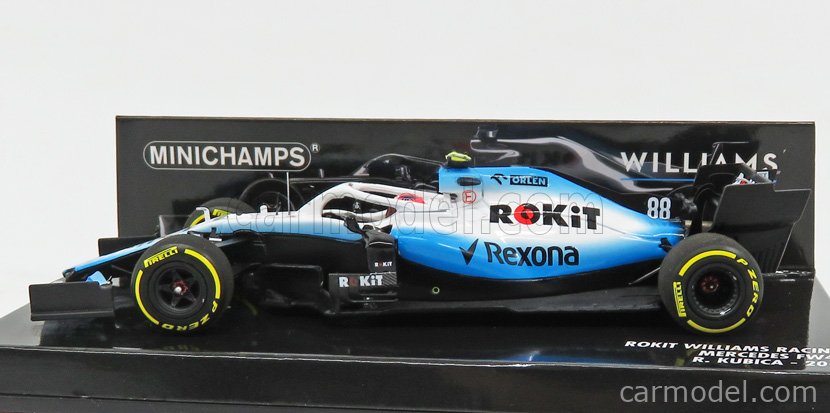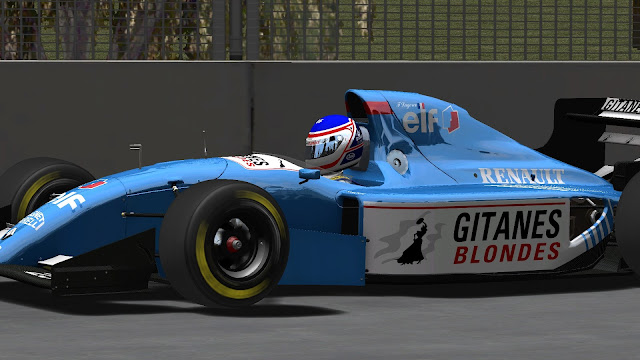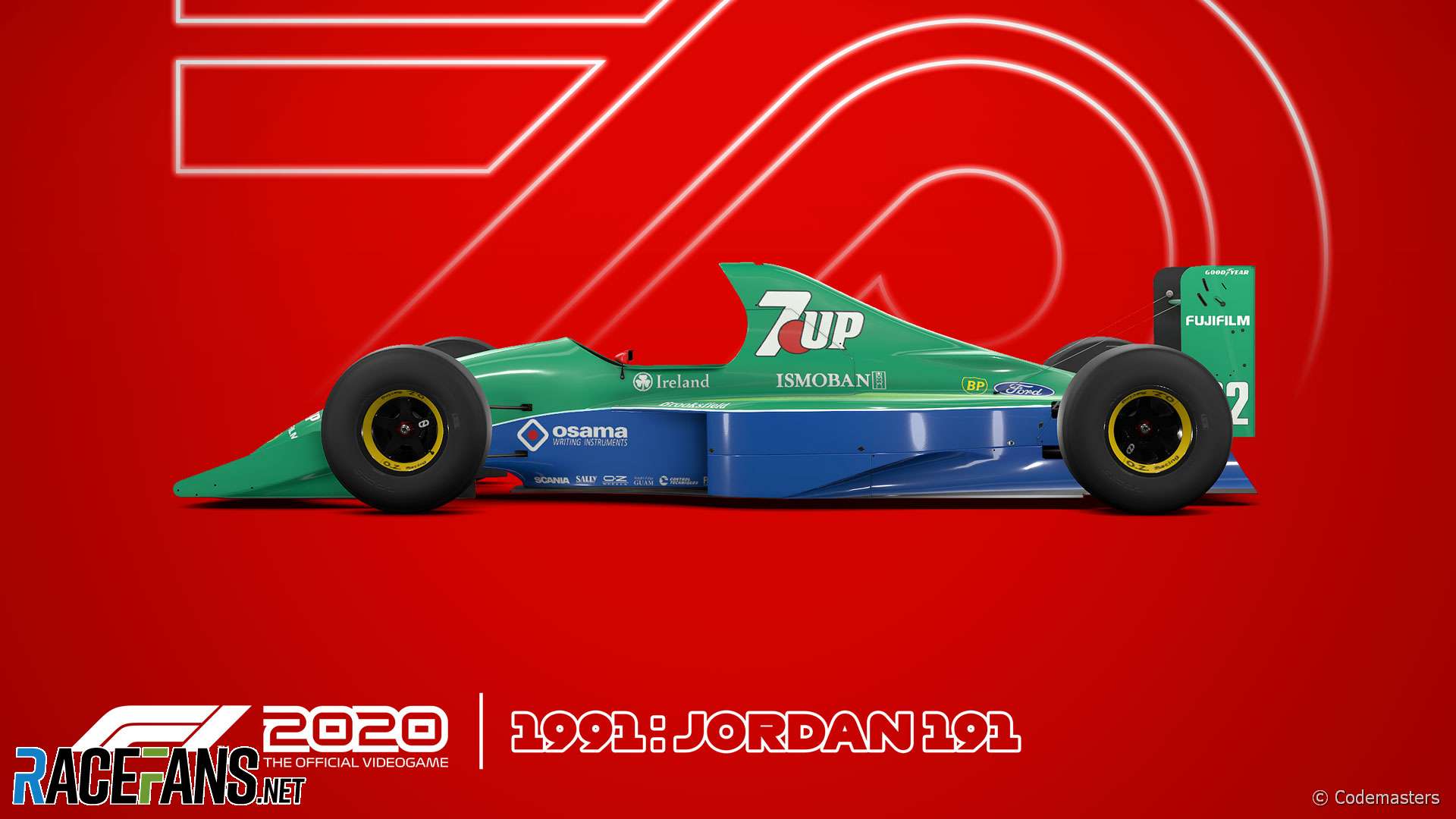Though the carshape was created back in October 2019, I finally got around to mapping and painting this car. Watch out for more versions of this car coming soon, but for now, enjoy the Australian GP version.
Friday, 11 December 2020
Wednesday, 30 September 2020
1/43 2019 Bburago Models
2019 Mercedes W11
 |
| Bburago BU38036-BOT |
 |
| Bburago BU38036-HAM |
2019 Red Bull RB15
 |
| Bburago BU38139-VERS |
Tuesday, 29 September 2020
1/43 Model Review: 2019 Williams FW42 (Minichamps)
 |
| Minichamps 417190088 |
Onto the model and we only have a Minichamps offering of this car, and no special versions that I know of yet. Again, the model makers have done a fine job in reproducing the car in 1/43 scale. You can see the Mercedes influence, the cape under the nose, the barge-board area, the shape of the sidepods and the raised front suspension.
Monday, 28 September 2020
Model Updates - first 2020 preseason cars by Spark
Hey model fans,
I hope you're keeping safe and healthy during this very strange year.
I was so glad that we do have a 2020 season, and I've been so grateful for a shuffled calendar.
No doubt the global pandemic has affected the model makers, but I'm glad to see that Spark have started releasing some 2020 F1 models, based on pre-season testing. So I've started a 2020 model summary page. I've been keeping the 2019 model summary page up to date too.
With the new rules on the horizon, most teams have simply updated their 2019 cars for the 2020 season, with Racing Point being the only team to try a new concept, and it seems to be paying off for them. Now that the same chassis needs to be retained for the 2021 season, we'll be looking at these shapes for a while. With the global pandemic affecting revenues, some teams like Haas will not bring any upgrades to the car in 2020, only specific race setups.
Saturday, 4 July 2020
GP4: 1994 Lotus 109 WIP update 1
 |
I started out with the wings on this car, they are pretty unique and I enjoyed recreating them. I probably went a little overboard with the details on the rear wing, whilst the front wing is pretty straight forward. Like the McLaren, the front wing end plates have a small horizontal element at the rear. The suspension is lifted off my Williams and Ligier and re-positioned. The main chassis came together quite quickly, the longest part was the nose. You'll notice in these screens there's a slight bulge, which isn't immediately obvious on pictures, with the livery hiding it very well. My shape kind of reminds me of a beluga whale.
Monday, 29 June 2020
GP4: 2020 Haas VF-20 by Fongu & Excalibur Released
Into the archive:
Launch Livery:
Testing Livery:
Friday, 29 May 2020
GP4: 2020 Haas VF20 WIP 2
Thursday, 14 May 2020
GP4: Updated 1994 Cars Download Links
This is an updated
Work in Progress release of my 1994 McLaren. I have put the basic livery on the
car, and I’ve done a quick AO map, baking shadows onto the shape. The car has
changed since I done the shadows, like where I’ve moved the camera forward, so the shadows need
updating but it’s a start. **update, I've fixed this now*** There's been some small updates on the car too.
Wednesday, 13 May 2020
GP4: 1995 Ferrari 412T2 now available to download
Today, I release my 1995 Ferrari 412T2 for GP4, one of my favourite cars from the 1990s. The download link is at the bottom of this post.
The car comes ready to replace the original car from the 1995 mod, with low downforce shape and non-tobacco textures, as well as early and late season variations of the airbox logos.
Saturday, 9 May 2020
GP4: Haas VF20 WIP 1

Tuesday, 28 April 2020
Hello...
In the meantime, I've been keeping an eye on some of the latest model releases and I've updated my 2019 page with a thumbnail of each of the 2019 models which you can view here: https://fongugp4.blogspot.com/p/2019-f1-articles.html
There's a few new models that I am yet to review, so look out for them to come in the next few weeks.
On the GP4 front, I continue to chip away at my modelling. I've taken a little break from 1994 cars and decided to work on a different era car. It's taking a bit longer than expected, but I've also been busier than usual. I'm not far off completing it and I will share some shots of my latest work soon.
In the meantime, I was excited to hear of a couple of 1990s cars being announced for the 2020 version of Codemaster's F1 series. They are adding some of Schumacher's classic cars, and I can't wait to see them as the previews looks super accurate - perhaps I will use them as inspiration to update GP4 versions in the same way I did with the 1995 Ferrari 412T2. These are the 1991 Jordan 191, the 1994 Benetton B194 and the 1995 Benetton B195.
Tuesday, 18 February 2020
1/43 Model Review: 2019 Racing Point RP19 (Minichamps)
 |
| Minichamps 417190018 |
With not much to choose between the two, the score for both models is the same.
Score: 8/10
Special Editions:
 |
| Minichamps 447190011 |


































